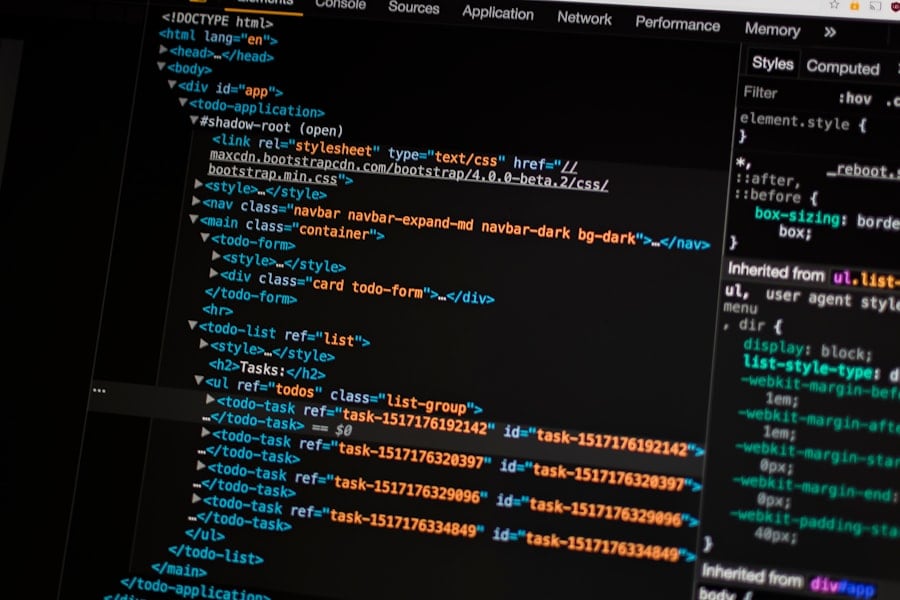Text classification is a core task in natural language processing (NLP) and machine learning, with widespread applications including sentiment analysis, spam detection, and topic categorization. The primary objective of Text Classification is to automatically assign predetermined categories or labels to text data based on its content. This process involves training a model using a labeled dataset, which is then employed to predict categories for new, unseen text samples.
The complexity and variability of human language make text classification a challenging endeavor. Words and phrases can convey different meanings depending on their context, creating difficulties for machines in accurately interpreting and classifying text. Despite these challenges, recent advancements in NLP and machine learning techniques have significantly improved text classification accuracy.
As a result, text classification has become an increasingly valuable tool for businesses and organizations across various industries.
Key Takeaways
- Text classification is the process of categorizing text into predefined categories or classes based on its content.
- Natural Language Processing (NLP) and Machine Learning are the foundational technologies used for text classification.
- Preprocessing text data involves tasks such as tokenization, stemming, and removing stop words to prepare the data for classification.
- Choosing the right algorithm for text classification depends on factors such as the size of the dataset and the nature of the text data.
- Feature engineering and model selection are crucial steps in building an effective text classification model.
Understanding the Basics of Natural Language Processing (NLP) and Machine Learning
Understanding NLP and Machine Learning
Machine learning, on the other hand, is a branch of AI that involves training algorithms to learn patterns and make predictions from data, without being explicitly programmed.
Text Classification: Combining NLP and Machine Learning
In the context of text classification, NLP and machine learning techniques are combined to build models that can automatically categorize text based on its content. NLP techniques such as tokenization, stemming, and lemmatization are used to preprocess textual data and extract relevant features, while machine learning algorithms such as Naive Bayes, Support Vector Machines, and deep learning models are used to train classifiers on labeled data.
Applications of Text Classification
By leveraging the power of NLP and machine learning, text classification models can effectively process and interpret human language, enabling a wide range of applications in various industries.
Preprocessing Text Data for Classification

Preprocessing text data is a crucial step in text classification, as it helps to clean and transform raw textual data into a format that is suitable for machine learning algorithms. This process typically involves several steps, including tokenization, removing stop words, stemming or lemmatization, and vectorization. Tokenization is the process of breaking down a piece of text into individual words or tokens.
This step is essential for converting unstructured text data into a structured format that can be processed by machine learning algorithms. Stop words, which are common words such as “the,” “and,” and “is,” are often removed from the text as they do not carry significant meaning for classification tasks. Stemming and lemmatization are techniques used to reduce words to their root form, which helps to normalize the text data and reduce the dimensionality of the feature space.
Finally, vectorization involves converting the preprocessed text data into numerical vectors that can be used as input for machine learning models.
Choosing the Right Algorithm for Text Classification
| Algorithm | Accuracy | Precision | Recall | F1 Score |
|---|---|---|---|---|
| Naive Bayes | 0.85 | 0.87 | 0.82 | 0.84 |
| Support Vector Machine (SVM) | 0.88 | 0.89 | 0.87 | 0.88 |
| Random Forest | 0.90 | 0.91 | 0.89 | 0.90 |
Choosing the right algorithm for text classification is crucial for building an accurate and efficient model. There are several machine learning algorithms that can be used for text classification, each with its own strengths and weaknesses. Some of the most commonly used algorithms include Naive Bayes, Support Vector Machines (SVM), and deep learning models such as recurrent neural networks (RNNs) and convolutional neural networks (CNNs).
Naive Bayes is a simple yet effective algorithm for text classification, particularly for tasks such as spam detection and sentiment analysis. It is based on Bayes’ theorem and assumes that the presence of a particular feature in a class is independent of the presence of any other feature. SVM, on the other hand, is a powerful algorithm for text classification that works well with high-dimensional data.
It works by finding the hyperplane that best separates the different classes in the feature space. Deep learning models such as RNNs and CNNs have also shown great promise in text classification tasks, particularly for tasks involving sequential or spatial data. RNNs are well-suited for tasks such as language modeling and sentiment analysis, where the order of words in a sentence is important.
CNNs, on the other hand, are effective for tasks such as document classification and topic categorization, where spatial relationships between words are important.
Feature Engineering and Model Selection
Feature engineering plays a critical role in the performance of text classification models. The process of feature engineering involves selecting and transforming the most relevant features from the raw text data, in order to improve the predictive power of the model. Some common techniques for feature engineering in text classification include bag-of-words representation, TF-IDF (Term Frequency-Inverse Document Frequency) weighting, word embeddings, and n-grams.
The bag-of-words representation is a simple yet effective technique for feature engineering, where each document is represented as a vector of word counts. TF-IDF weighting is another popular technique that takes into account the importance of words in a document relative to their frequency in the entire corpus. Word embeddings, such as Word2Vec and GloVe, are dense vector representations of words that capture semantic relationships between words based on their context in a large corpus of text.
N-grams are another useful feature engineering technique that captures sequences of n words in a document, which can be particularly useful for capturing local context in text data. In addition to feature engineering, model selection is also an important consideration in building effective text classification models. The choice of model depends on various factors such as the size of the dataset, the complexity of the task, and the computational resources available.
It is important to experiment with different models and hyperparameters in order to select the best-performing model for a given text classification task.
Evaluating and Fine-tuning Text Classification Models

Evaluation Metrics
There are several metrics that can be used to evaluate the performance of a text classification model, including accuracy, precision, recall, F1 score, and area under the ROC curve. Accuracy is a common metric used to measure the overall performance of a classifier, but it may not be suitable for imbalanced datasets where one class is much more prevalent than others.
Understanding Precision, Recall, and F1 Score
Precision measures the proportion of true positive predictions out of all positive predictions made by the model, while recall measures the proportion of true positive predictions out of all actual positive instances in the dataset. The F1 score is the harmonic mean of precision and recall, providing a balanced measure of a model’s performance.
Fine-Tuning Strategies
In addition to evaluating the performance of a model, fine-tuning involves making adjustments to improve its performance. This may involve hyperparameter tuning, feature selection, or using ensemble methods to combine multiple models for improved performance. It is important to carefully monitor the performance of the model on validation data during fine-tuning, in order to avoid overfitting or underfitting.
Applications of Text Classification in AI-powered Systems
Text classification has numerous applications in AI-powered systems across various industries. In e-commerce, text classification is used for sentiment analysis to understand customer feedback and reviews, as well as for product categorization and recommendation systems. In healthcare, text classification is used for medical document categorization and information extraction from clinical notes.
In finance, it is used for fraud detection and sentiment analysis of financial news. In addition to these applications, text classification is also widely used in social media monitoring for brand sentiment analysis and trend detection. In legal services, it is used for document categorization and contract analysis.
In customer service, it is used for automated ticket routing and sentiment analysis of customer inquiries. Overall, text classification plays a crucial role in enabling AI-powered systems to automatically process and interpret large volumes of textual data, providing valuable insights and enabling automation in various domains. As NLP and machine learning techniques continue to advance, we can expect to see even more sophisticated applications of text classification in AI-powered systems in the future.
If you’re interested in the intersection of artificial intelligence and the metaverse, you may want to check out this article on Artificial Intelligence (AI). It delves into the potential impact of AI on virtual worlds and how it can be used to enhance user experiences and interactions within the metaverse. This could be particularly relevant to text classification in the metaverse, as AI technologies are often used to analyze and categorize large volumes of text data.
FAQs
What is text classification?
Text classification is the process of categorizing and organizing text documents into different predefined classes or categories based on their content. It is a fundamental task in natural language processing and machine learning.
What are the applications of text classification?
Text classification has a wide range of applications, including spam filtering, sentiment analysis, topic categorization, language detection, and content recommendation. It is used in various industries such as e-commerce, customer service, healthcare, and finance.
How does text classification work?
Text classification uses machine learning algorithms to analyze the content of text documents and assign them to predefined categories. It involves preprocessing the text data, feature extraction, and training a classification model using labeled data.
What are the challenges in text classification?
Some of the challenges in text classification include dealing with unstructured and noisy text data, handling large volumes of documents, addressing class imbalance, and selecting appropriate features and algorithms for different types of text.
What are the different approaches to text classification?
There are several approaches to text classification, including rule-based systems, traditional machine learning algorithms such as Naive Bayes and Support Vector Machines, and more advanced techniques such as deep learning with neural networks.
What are the performance metrics used to evaluate text classification models?
Performance metrics for evaluating text classification models include accuracy, precision, recall, F1 score, and area under the receiver operating characteristic (ROC) curve. These metrics measure the model’s ability to correctly classify documents into their respective categories.











Leave a Reply